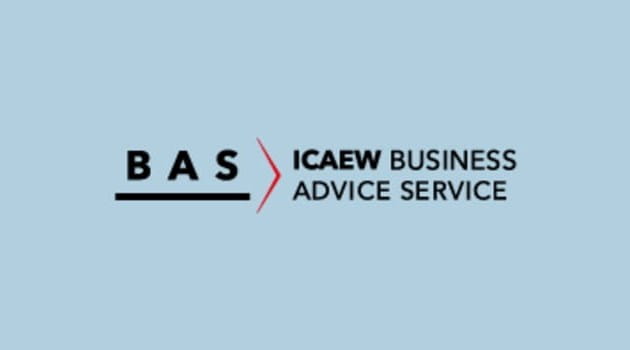You take public transport, you separate your recycling and you try to eat fewer avocados – so when it comes to your investments, why wouldn’t you also look to be sustainable and make your money work for you while at the same time being kinder to the environment?
Here’s the problem: until now, terms such as ‘sustainable’ and ‘green’ were not regulated, meaning anyone could use them to describe their financial products. This has led to numerous accusations of financial greenwashing, when firms claim that investment products are more environmentally friendly than they really are.
DWS, a subsidiary of Deutsche Bank, is a case in point. The firm was raided several times by the German authorities in 2022 in a $1trn greenwashing inquiry following a whistleblower tip-off. It was alleged that DWS exaggerated the green credentials of the investments it sold and made misleading statements in its 2020 annual report, claiming that more than half of its $900bn in assets were invested using ESG criteria.
SDR – the answer?
Cue Sustainability Disclosure Requirements and investment labels (SDR) – a package of measures proposed by the Financial Conduct Authority (FCA) to regulate the use of ‘green’ terms in the UK so consumers can make more informed decisions about their investments.
SDR aims to combat greenwashing by introducing standardised labelling of green financial products and setting a minimum threshold for the use of certain terms, so consumers have some comfort that products do indeed set out to do at least some of what it says on the tin.
Under the proposed regime, ‘sustainable focus’ products must have at least 70% of assets that meet a ‘credible standard’ of environmental and/or social sustainability or align with a specified environmental and/or sustainability theme.
To give credit to those on a sustainability journey, the categories ‘sustainable improvers’ may be used for products whose objective is to deliver measurable improvements in the sustainability profile of assets over time, and ‘sustainable impact’ for products with “an explicit objective to achieve a positive, measurable contribution to sustainable outcomes”.
The concept is great in theory, but faced with regulating such a vast array of financial products, the devil is in the detail.
Assurance and SDR – frenemies in the current proposed regime
Bearing in mind that talk is cheap, independent assurance over the regime may be the way to combat snake oil salesmen tacking a premium on an investment just because it has the term ‘sustainable’ in front of it. By promoting trust in reporting, and enabling comparability and consistency across financial products, assurance can increase consumer confidence in this burgeoning investment area.
However, consistent assurance under the current proposed regime would be challenging for a number of reasons, also highlighted in our response to the FCA’s SDR consultation.
- The first question is, why the 70% threshold in ‘sustainable focus’ products? Does this mean an investment of 70% in wind farms and 30% in cobalt mining will still be classified as ‘sustainable’?
- Following on from this, the proposal does not specify how to calculate 70% of a firm’s assets. Is that by number, by nominal value or by market value? Each method has the potential to bring its own raft of issues. For example, market value can be volatile, especially with illiquid assets, which could create cliff-edge moves.
- The absence of definitions for ‘credible standard’ and ‘specified environmental and/or sustainability theme’ is understandable, given that domestic and international sustainability frameworks continue to emerge. It does, however, highlight the need for a distinction between ‘standard’ and ‘theme’, and clarity over whether one trumps the other. As it stands, there’s a risk of double standards allowing for cherry-picking of assets to facilitate greenwashing.
- The lack of a specified timeframe over which the sustainability profile of assets should improve in the ‘sustainable improvers’ and ‘sustainable impact’ categories opens the cookie jar for firms to acquire assets and set long-dated targets before any real benefit is achieved.
We accept that it can be difficult and, in some cases, impractical, to set a timeframe for improvement for some assets in the sustainability space. Nevertheless, further guidance is needed to ensure there is a clear and measurable target for improvement, to avoid situations where the firm’s sustainability plan is nothing more than a work of science fiction.
- The requirement under the current labelling regime for investment managers to self-assess under a wide range of areas is far too wide and onerous to assure – the onus is set squarely on whether the assurance provider considers the plans to be feasible, which comes across as a very ‘finger in the air’ approach. It also opens the door to investment managers adopting a pick ’n’ mix approach to which aspects to assure over.
Where do we go from here?
Developing any regime in this space is challenging, bearing in mind the broad scope of initiatives that fall under the ESG banner, some of which are competing. Add to that the fact that not all stakeholders are in agreement as to what constitutes ‘sustainable’ and the pecking order of priorities, and it quickly becomes an unenviable task.
Linking the required standard to the UK Green Taxonomy currently in development will help answer some of the questions posed above. As with all principles-based regulation, the success or otherwise of this regime will very much depend on its implementation.
How the FCA chooses to engage with investment managers and perform thematic reviews to determine best practice will be critical to whether this regime sinks or floats. Similarly, the speed at which the FCA revises and/or publishes new guidance after these reviews will be a key determinant to the success of this proposal.
In the meantime, firms can also apply targeted assurance over measures that are already available – for example certain KPIs – which in the short term at least would provide assurance over the most relevant underlying information from an investors’ perspective. As ways of calculating and reporting certain KPIs – for example, greenhouse gas emissions – already exist, this approach can be adopted immediately. This is a stopgap, however, as fund managers choose their own KPIs and there’s no telling whether these align with the proposed regime.
Polly Tsang is Financial Services Regulatory Manager at ICAEW



